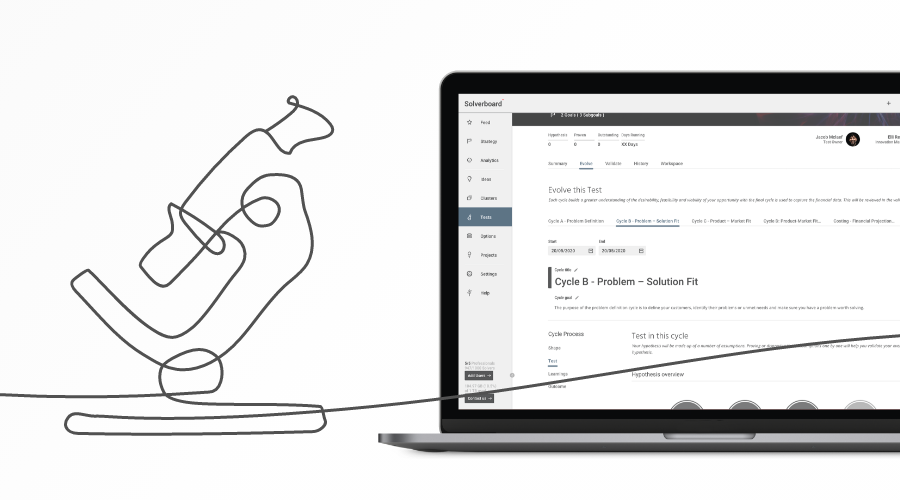
Your innovation strategy is aligned with your business goals and you’ve cultivated your ‘best ideas’. So what happens next?
Once you have potentially viable ideas, it’s time to test that potential. The first step is testing to see if your idea will actually work. The next step is validating those tests so that you can decide whether or not you should progress your idea further. Here’s everything you need to know...
Why is testing and validating ideas so important?
One of the most crucial elements of the innovation process is testing and validating. Without rigorous testing, it can be easy to stray from your objectives or to waste resources on an idea that won’t work.
Even though your idea might seem to align perfectly with your business goals, you need a way to know this unequivocally. Testing helps you confirm whether the ideas you’re progressing will truly create value for your business and serve customer needs. It also shows you what you might need to modify for your idea to progress.
What does the testing phase involve?
Effectively, testing is about proving or disproving your assumptions. To do this, your testing needs to answer three critical questions:
- Customer desirability: Does it serve a customer need or pain point?
- Business model viability: Is it worthwhile doing? Is it beneficial enough and how will it create value?
- Technical feasibility: Can we do it? Is it technically achievable?
How do we manage tests?
Here’s the step-by-step method we use on Acclaim Ideas:
- Create and set up. Whether you’re creating a test from new or using a graduated idea, you need to set a hypothesis. This should be a clear statement that sets out the expected outcome of your innovation. Your hypothesis should be measurable and something you could potentially disprove. It should also excite and inspire people about the project’s potential, giving them something to aim for. Once your hypothesis is set, you should assign a Test Owner and work with them to set up a test team.
- Plan and explore. This stage is about digging deeper into your assumptions. To do this, you need to first establish what your assumptions are. What are your predictions in terms of technical feasibility, business model, customer desirability and strategic fit? Design experiments to prove or disprove these assumptions and assign team members to work on them.
- Test. Conduct your experiments, evaluate the results and capture the learnings. You can then share this with your team and make ongoing improvements. Whatever you learn should help you establish a business model for your innovation project as well as financial projections. Keep testing/modifying until no further learning is achieved.
- Assess your results. Your testing process will have many iterations. Each of these iterations should give you insight that will help you build your business model. This in turn will allow you to create financial projections (innovation profit, the cost of bringing it to market). Summarise these observations and your recommendations, ready for the next stage: validating your ideas.
What is idea validation?
Idea validation is about evaluating everything you’ve learned in the testing stage to reach a conclusion. It’s a crossroads: graduate the idea or stop.
At this stage, your test team makes their recommendations to your innovation management team so that they can decide whether the idea should receive investment and progress. All of the findings from the testing phase (including cost, alignment, profit projections) will be used to determine whether or not the idea is ultimately viable.
On Acclaim Ideas, all of this information is clearly documented and easily shareable. If your team decides the project is viable, this can be graduated to an Option. The idea can then either be banked as a credible option to be pursued at a later date, or launched immediately as a project. Alternatively, if the innovation team decides that the idea needs further evaluation, they can seek the input of the organisation’s subject matter experts.
Acclaim Ideas provides a reliable methodology for the entire innovation testing cycle. From planning (creating hypotheses, planning experiments, and forming your test team) to testing (repeating and refining, using learnings to shape your business case) to validation (assessing and concluding), our platform gives you a clear, effective process to follow.
Innovation always comes back to strategy and process; when these two factors are solid, you stand the best chance of success. Having a concrete strategy and process will help you gauge which ideas you should run with and help to ensure that everyone in the organisation is on board. Testing and validating are a critical part of this process. While it’s not necessarily the end of the journey, it is the end of a chapter; one which should give you a definitive answer about the value of your innovative ideas.





